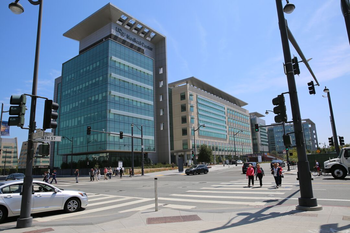The average woman will spend almost a third of her life in menopause.
Menopause is defined as one year without a period. Perimenopause takes place in the years leading up to menopause. During this time, a woman may begin to have symptoms such as menstrual irregularities or hot flashes but still has periods.
These symptoms are caused by fluctuating and declining levels of the hormones estrogen and progesterone. Hormone therapy is medication that replaces the estrogen and progesterone the body stops making during the transition to menopause.
What Sets us Apart
Clinic Locations
Leading the Conversation
UCSF gynecologists cut through the confusion. "Despite being a universal experience for women, menopause often seems shrouded in stigma or confusion. But menopause is having a moment: Women today can choose from a wealth of options to address their unique needs during this time in their lives, say UCSF experts."
Two million U.S. women enter menopause every year, yet doctors' menopause gaslighting keeps women from getting the treatment they need.
You’ve tracked steps, heart rate and sleep. Now here are the best apps to keep tabs on disruptive symptoms of midlife.
There’s no need to go into it without preparation.
To evaluate safety and effectiveness of therapeutic ultrasound for treatment of postmenopausal vaginal dryness. In a pilot study, postmenopausal women with self-reported vaginal dryness were randomized (1:1) to double-blind ultrasound treatment (n = 21) or sham (n = 21) for 12 weeks. Primary effectiveness endpoint was change from baseline to week 12 in Vaginal Assessment Scale symptoms (dryness, soreness, irritation, dyspareunia).
UCSF study calls attention to the potential for estrogen therapy in slowing the course of the disease.


